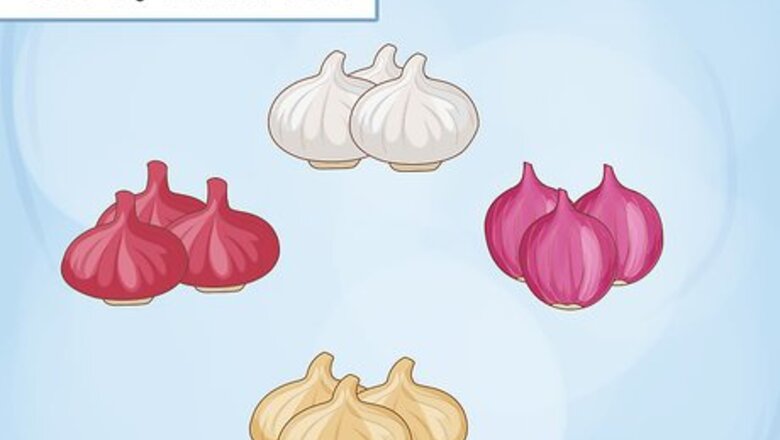
views
Preparing for Planting
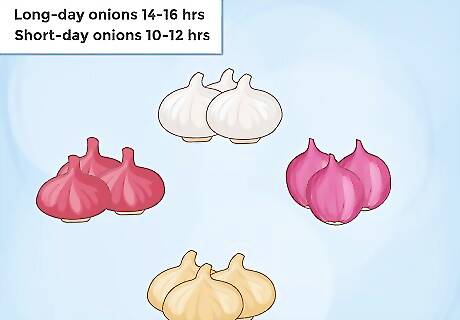
Choose a type of onion to grow. As with most fruits and vegetables, there are many variations of the onion that are appealing for different reasons. Onions come in three general colors - white, yellow, and red/purple - each with their own distinct taste. Additionally, onions are categorized into two growing types: long-day and short-day. Long-day onions are named such because they begin sprouting when the days between 14 to 16 hours in length (late spring/summer), while short-day onions begin sprouting when days are between 10 to 12 hours in length (winter/early spring). Long-day onions grow the best in northern states, while short-day onions grow the best in southern states. Yellow onions are golden in color and have a slightly sweet flavor, white onions are sharp and a bit tangier than their yellow counterparts, and red onions are violet in color and are often eaten fresh rather than cooked.
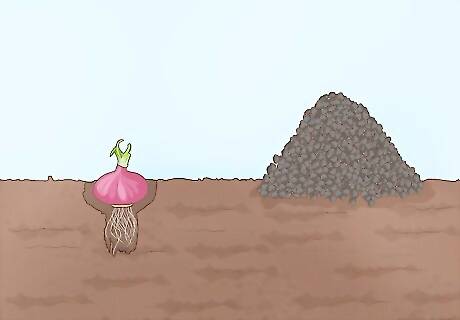
Decide how you will plant the onions. In general, there are two popular ways of growing onions: using either onion sets (bulbs) or using onion seeds. Gardeners tend to prefer planting onion sets, as they are a bit hardier and stand up to poor weather better than onion seeds. However, if you're able and willing to grow your onions from seeds indoors and transplant them outdoors, you can certainly raise them all on your own from seeds. You can also plant your onions in the ground in warm weather. You can choose to grow onions from transplants/cuttings, but this isn't always successful and is much more difficult to accomplish than just using sets or seeds. Visit a local nursery to get recommendations on sets and seeds that grow well in your area.
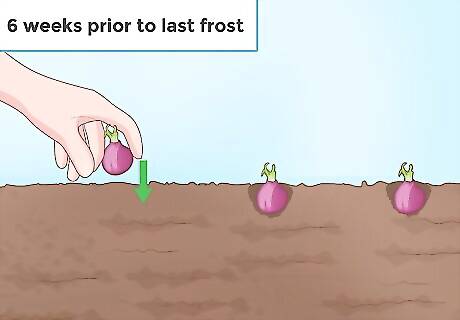
Know when to grow. Onions can be tricky to grow if they're not planted at the right time. If planted in cold weather, they can die off or waste energy in blossoms rather than bulbs in the spring. If you're planting seeds, start them indoors at least 6 weeks prior to planting outdoors. Make sure that you sow the onions 6 weeks before your average last frost date, and set them out after that date.

Select the ideal location. Onions aren't too terribly picky when it comes to growing conditions, but they do have some preferences. Select a place with plenty of room and full sunlight. Onions will grow quite large if they're given enough space, so keep in mind that the more area you give them to grow, the larger they will get. Avoid planting them in a location that is shaded by larger plants or trees. Onions grow well in raised beds, so if you're unable to find adequate garden space, you can build a separate raised bed for your onion crop.
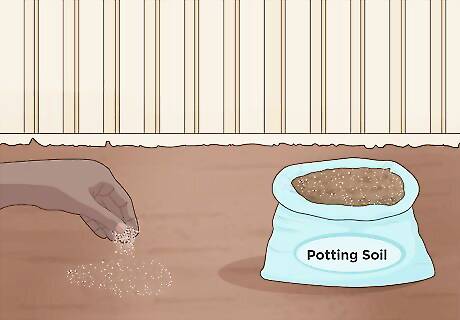
Prepare the soil. Although it takes some forethought, if you are able to prepare the soil of your plot for planting several months in advance, you'll receive a better onion crop down the line. If you're able, begin tilling the soil and adding in manure in the fall. If your soil is very rocky, sandy, or has lots of clay, mix in some potting soil to help even things out. Additionally, test the pH level of your soil and add in any necessary compounds in order to create a pH that falls between 6 to 7.5. Testing and altering the pH of your soil is best done at least a month prior to planting, so that any additives have time to take effect on the soil and prepare the foundation for the onions to grow.
Planting Your Onions

Get the soil ready. When you're ready to plant, till the soil about 6 inches (15.2 cm) deep and add a layer (1 cup per 20 feet) of phosphorous fertilizer. However, only do this if your soil is low on phosphorus. Be sure to test your soil first to find out. Using a mixture such as 10-20-10 or 0-20-0 will provide an extra boost for your developing onions. At this point, be sure to remove any weeds that may be present in the garden plot you're planting in.
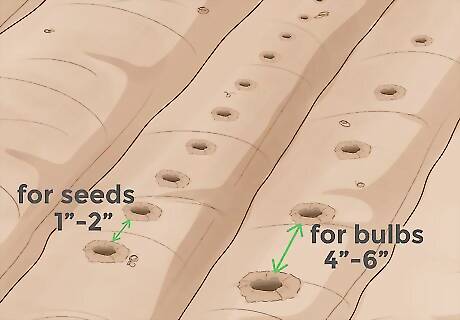
Dig the holes. Plant onions so that no more than one inch of soil is placed above the sets or seedlings; if too much of the bulb is buried, the growth of the onion will be reduced and constricted. Space onion sets 4–6 inches (10.2–15.2 cm) apart, and onion seeds 1–2 inches (2.5–5.1 cm) apart. As your onions begin to grow, you can transplant them and space them further apart in order to increase their growing size.
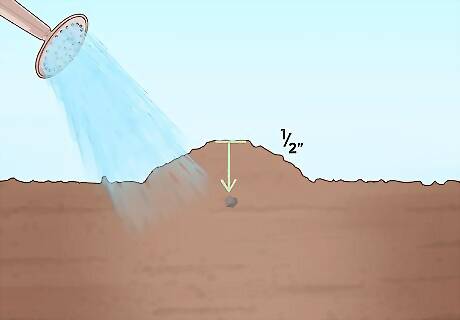
Plant the onions. Place your seeds in the holes you've dug, covering them with ¼ to ½ inch of soil. The sets should be no more than two inches deep. Use your hands or shoes to firmly tamp the soil over the top of the onions; they grow better in firm, rather than loose, soil. Finish up planting by adding a bit of water, and you're set to watch them grow! Transplanted onions require more water than sets or seeds, so give yours a little extra moisture if that's what you planted.

Maintain your onion patch. Onions are relatively delicate plants, as they have a fragile root system that can easily be damaged or abused by weeds and tugging. Use a hoe to cut off the tops of any weeds that emerge, rather than pulling them out; tugging the weeds could tug out the roots of the onions, and make growing difficult. Give your onions about 1 inch (2.5 cm) of water per week, and supplement with a nitrogen fertilizer once a month for nutrients. Immediately after planting, add a light layer of mulch between each plant to lock in moisture and block out weeds. If you want your onions to taste a bit sweeter, give them more water than you normally would. If any of your onions flower, pull them out. These onions have 'bolted' and won't continue to grow in size or flavor.

Harvest your onions. Onions are fully ripe when the tops appear golden yellow; at this point, bend the tops so that they lay flat on the ground. Doing this will move further nutrients towards developing the bulb rather than growing the shoots. After 24 hours, the tops should appear brown and the onions are ready to be pulled. Remove them from the soil and trim off the shoots at 1 inch (2.5 cm) above the bulb and the roots. Leave the onions to dry out for a day or two in the sun, and then move them to a dry space indoors for two to four weeks to continue drying. Store onions in stockings or over a wire screen to allow good airflow when drying. This will help them to keep for longer and maintain their flavor. Sweet onions will go bad earliest because of their high moisture content, so eat them first in order to prevent rot from making an appearance. Discard, or cut up and use, any onions that show signs of decay so they don't spread disease to other onions in storage.



















Comments
0 comment